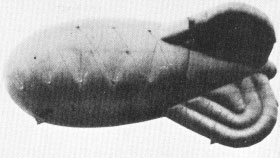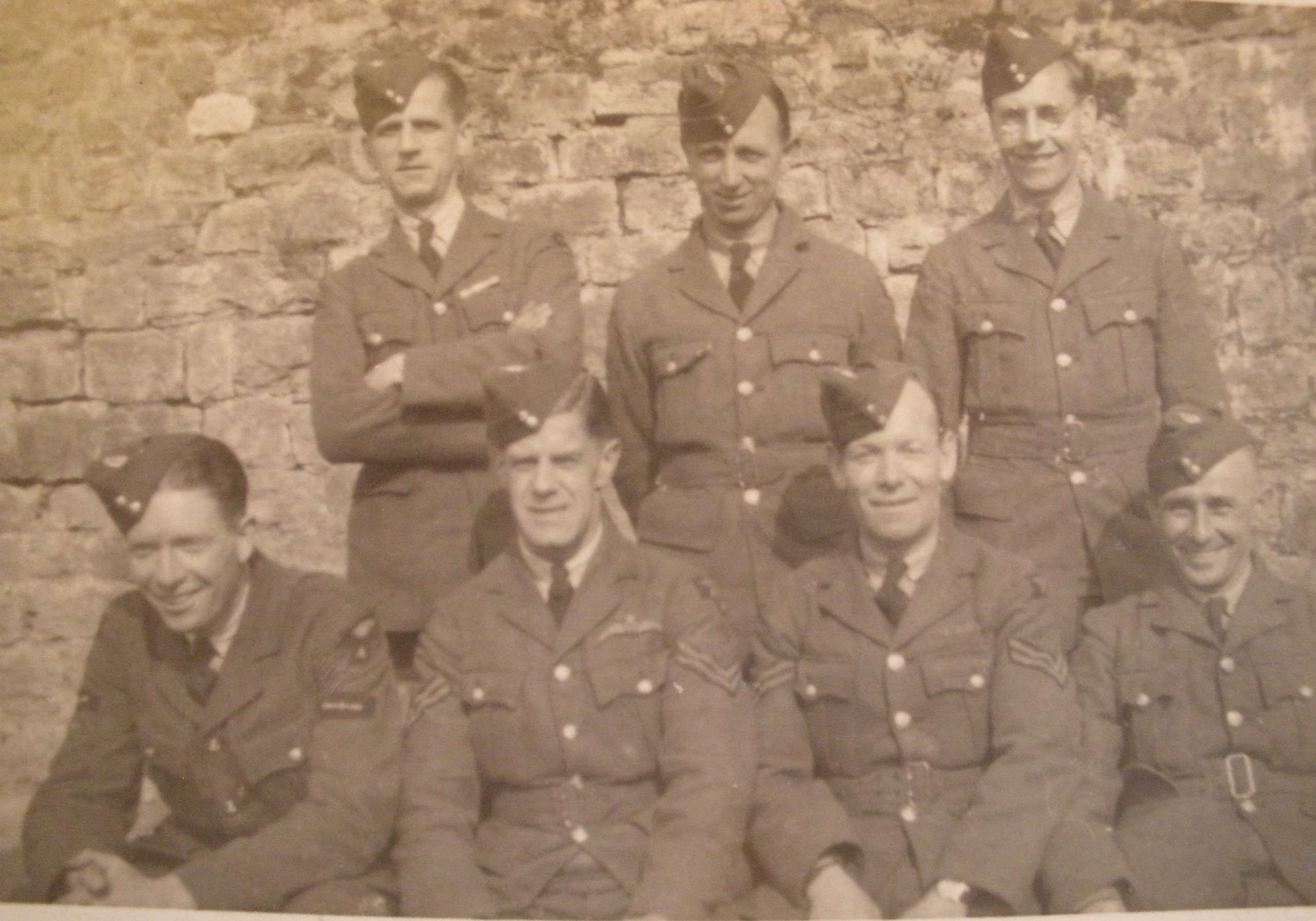 Click
for Site Directory
Click
for Site Directory
Alec Hinks, 912 squadron in France 1940

Alec, top left, in France 1940
Alec enlisted in the RAF, for 4 years service, on 5 March 1939, aged 39. He was enlisted in 912 squadron (Barrage Balloons)
as an aircraftman second class (AC2). The squadron was initially head quartered on the Tyburn Road, but after a recruiting
campaign in Wolverhampton, it moved to Whitehouse Common, Sutton Coldfield. The squadron was embodied on 24.8.39
with 377 men of all ranks. The equipment began arriving the next day, in the form of winches and trailers. There followed
a period of training before he was appointed “Driver Winch” on 16 Oct 1939, but was still an AC2. The squadron was part
deployed in north Birmingham. The squadron was one of 6 such Squadrons whose task was to defend the war effort in
Birmingham. 911, 912 and 913 protected the North of the city particularly Castle Bromwich airbase and the Castle
Bromwich Spitfire factory, coming under Number 5 Balloon Centre at RAF Sutton Coldfield. Three flights of the squadron
were posted as follows;
B flight – Walmley Golf Club, Greenhill Rd, Wyldegreen
C flight – Tullymeath, Hodgehill Common, Castle Bromwich
D flight – 810 Walsall Road, Great Barr
In January the squadron was ordered to prepare to be deployed to France. Vaccinations were done on 1.2.40, maintenance
and planning for the move starting at the same time. The first men went on embarkation leave on 3.2.40.
Alec was granted embarkation leave between 4 and 8 February 1940 and then returned to the squadron to continue preparations
for France. The leading elements of the squadron departed Birmingham for the port of embarkation on 10 February, in a convoy
of 19 winches. The bulk of the squadron left Sutton Coldfield by train at 00:45 on 15 February, arriving at Dover at 10:00. They
took a train ferry to Boulogne (although they initially were destined for Dunkirk) where they arrived later that day. HQ was
established at the Hotel Du Nord and sites on the Rue de Beauve were selected on 16 February. The first balloons were in the
air by 8 March, with a mixture of British and French anti aircraft guns nearby. The French were in overall command of the ports
and the squadron had its orders – in French! There were 16 balloons of the squadron posted between Griz Nez and Boulogne,
which flew throughout the night and only during the day if there was an alert. However, whilst in France, Alec was promoted on
1 May 1940 to Aircraftman first class (AC1). The Barrage Balloon (BB) squadrons (it is believed that 4 were sent to France, including
912 and 924 squadrons) were posted to protect the RAF bases in northern France and also (mostly) the ports and French naval
facilities, which were used to support the deployment of the BEF and RAF.
The German invasion of Belgium and France commenced on 10 May 1940 and the RAF were withdrawn from France within 11 days.
912 squadron, still in Boulogne, was in danger of being cut off by the German advance and on 21 May two balloon sites were hit by
German bombers (no casualties) and the remaining squadron balloons not shot down were cut adrift. All ciphers and code books
were destroyed by the squadron adjutant. With the enemy only 2 miles from Boulogne, the squadron took all winches and transports
and left at 20:00 on the 22 May, heading north to Calais. They halted for the night on the roadside before reaching Calais the next day.
Boulogne was essentially in enemy hands on 24 May and the final citadel fell on the 25 May – 912 squadron was only a day ahead of
the enemy.
The squadron came under French harbour control at Calais and the men were positioned for evacuation. Alec was evacuated, along
with the rest of the squadron, from Calais at 13:55 on 23 May on board the “City of Christchurch” bound for Southampton. The Germans
commenced their attack on Calais on 24 May and controlled the town by the 25th , with only the citadel held by the allies until the 27th.
By 27 May only Dunkirk remained available to the British, as Boulogne and Calais had now both been lost to the Germans, and thus
began the “little ships” campaign to bring back the rest of the army. Attempts by British and French troops to escape Boulogne and
Calais were unsuccessful, so Alec was lucky indeed to escape being captured.
On their return from France the squadron was sent to the No.1 RAF Balloon Training Unit, based at Cardington, Bedford. This was to
train and refit the large number of BB squadrons assembled in England at the end of May and early June 1940. Alec, alongside the
rest of the squadron, was granted leave from 27 May to 1 June.
If anyone can help with any more information on Alec or anyone who served with him please contact peter.garwood@bbrclub.org